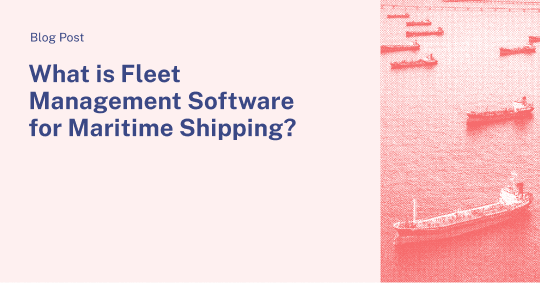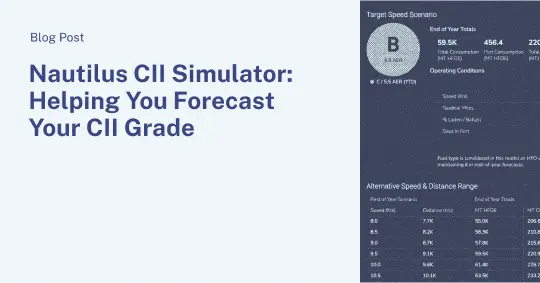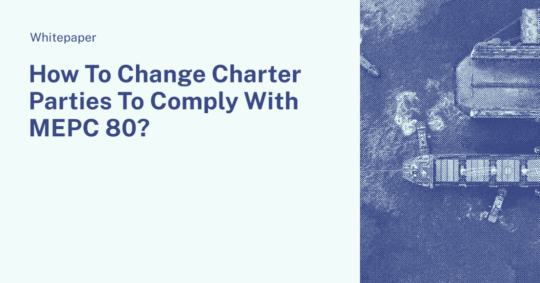The emissions reduction imperative is taking center stage in the shipping world. Just last week, during the 80th session of the IMO’s Marine Environment Protection Committee (MEPC 80), the industry agreed to reduce greenhouse gas (GHG) emissions by at least 20% by 2030 and 70% by 2040, (compared to 2008 levels) and net-zero by 2050. Additionally, regulatory pressures such as the Carbon Intensity Indicator (CII), Energy Efficiency Existing Ship Index (EEXI), or the European Union Emissions Trading System (EU ETS) have underlined the need for the shipping industry to decarbonize. For both ship owners and charterers, the topic of emissions reduction also has commercial implications.
Navigating carbon emissions responsibility
Traditionally, a vessel’s owner has been responsible for the vessel’s emissions, regardless of who was operating the vessel. With the introduction of CII, the way that responsibility is delineated between the owner and the charterer of a chartered-out vessel has become more complex. Charterers are accountable for operational decisions, while owners manage the vessel’s technical performance. With both operational and technical dimensions having an impact on carbon emissions, it is increasingly necessary for owners and charterers to collaboratively manage a ship’s carbon emissions and CII.
While the technical upkeep of a vessel is within the owner’s control, a ship may receive a poor CII grade due to operating decisions made by the charterer. Owners could then be subject to penalties as a result of decisions made by charterers. However, charterers are often not equipped with all the information necessary to make optimized decisions and have an inability to track their emissions.
Charterers have to balance a range of operational factors, staying within charter party constraints while focusing on fuel and cost efficiency. With penalties for late arrival, they often have to “sail fast, then wait” (also known as “hurry-up-to-wait”) to reach port ahead of the laytime to avoid the risk of demurrage. These suboptimal operations result in burning extra fuel and the creation of unnecessary emissions, which have a negative impact on the vessel’s CII. (Read more about the implications of the “sail fast, then wait” phenomenon in detail in our white paper co-written with BIMCO.)
But due to the siloed nature of information between owners and charterers, the latter face a challenge in accurately tracking their emissions. Without a solid understanding of the emissions output of a chartered vessel, charterers struggle to identify opportunities to reduce the vessel’s carbon footprint, and their ability to manage their Scope 3 emissions is limited. This then has a knock-on effect on the owner’s ability to manage the CII grade of their vessel.
The impact of charter parties on emissions reduction
Through the emergence of CII, the industry is at an unprecedented milestone where owners and charterers alike have skin in the game in managing a ship’s carbon intensity. While CII is far from a silver bullet to decarbonization, it does present an opportunity to align incentives between the counterparties.
With CII, we can expect to see new clauses in charter parties that oblige charterers to return a vessel at an agreed-upon CII score. Additionally, with carbon pricing taking hold in the market, stakeholders will see a renewed incentive to minimize their carbon emissions. Since carbon emissions are impacted by both technical and operational performance management, owners and charterers will have to collaborate closely and share information to ensure a vessel is on track to minimize carbon emissions and reach an adequate CII score.
But the remaining issues that need to be addressed are the inefficiencies that are baked into current charter parties. Charter parties are a product of their time, written in an era well before contemporary technology. These outdated structures result in a zero-sum relationship between owners and charterers where financial penalties are used as a check and balance, resulting in reduced profits across the value chain and increased emissions from inefficient behaviors (such as “hurry-up-to-wait”) designed to minimize risks rather than optimize for commercial or environmental goals.
Updating charter parties to reach net zero
Nautilus Labs’s goal is to decarbonize the global maritime industry. As we’ve explained, one of the biggest barriers to this goal is the way charter parties are designed. That’s why we’ve built Green Charter, a new legal framework for charter parties that uses data and machine learning as the independent, shared source of truth between a ship’s owner and charterer.
With Green Charter, owners and charterers can now make joint decisions based on a shared single dataset.
This shared access to the performance and emissions profile of a vessel means operators are empowered to optimize their operations and reduce their carbon footprint. Additionally, operators can report on their carbon emissions with confidence and can further leverage their sustainability efforts to raise their ESG standings.
With trust, transparency, and collaboration as the foundation for the owner-charterer relationship, counterparties are able to reduce their emissions and meet their sustainability goals while seeing improved commercial outcomes.
If you would like to learn more about Green Charter, please reach out to us at sales@nautiluslabs.com.


